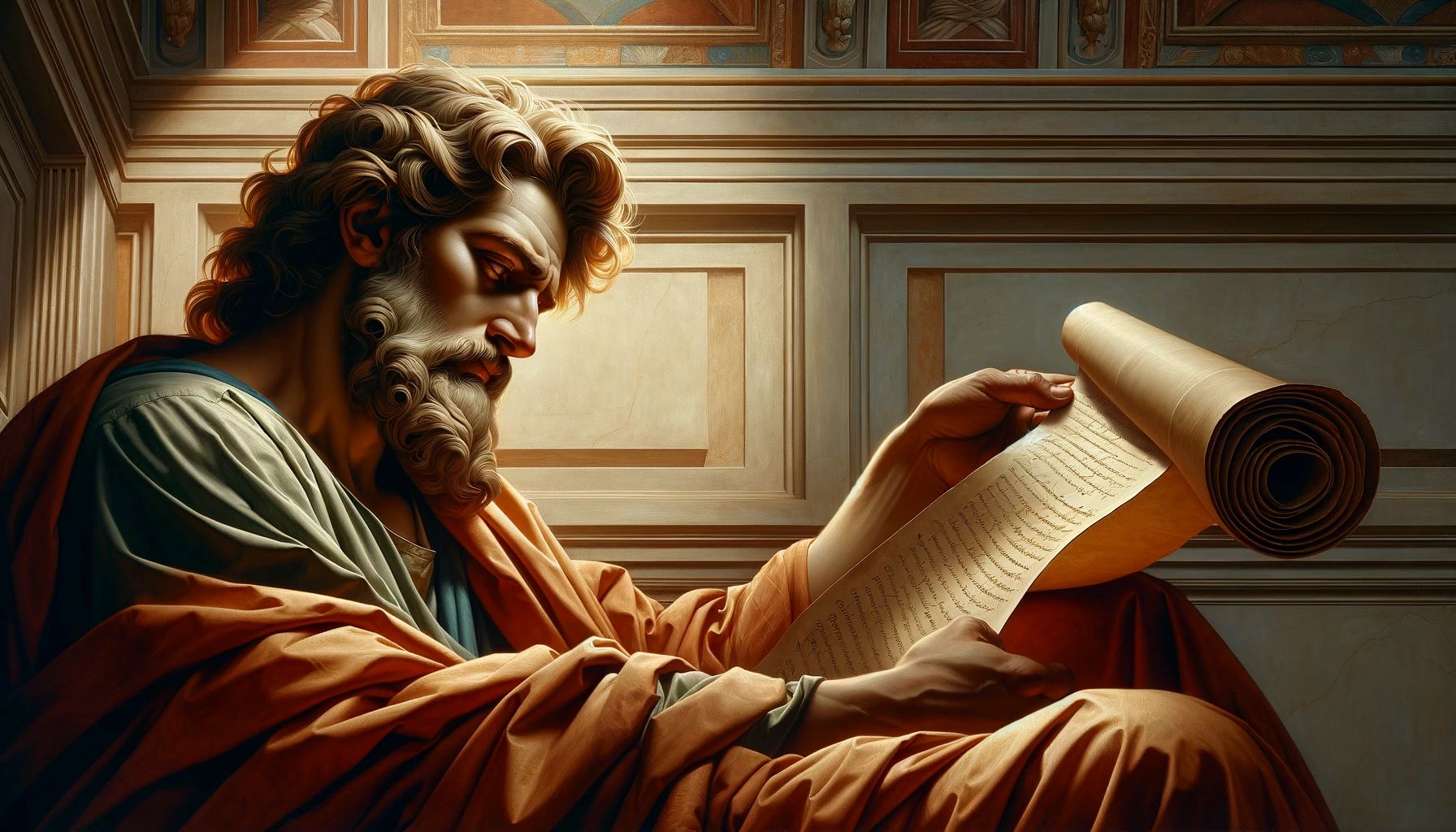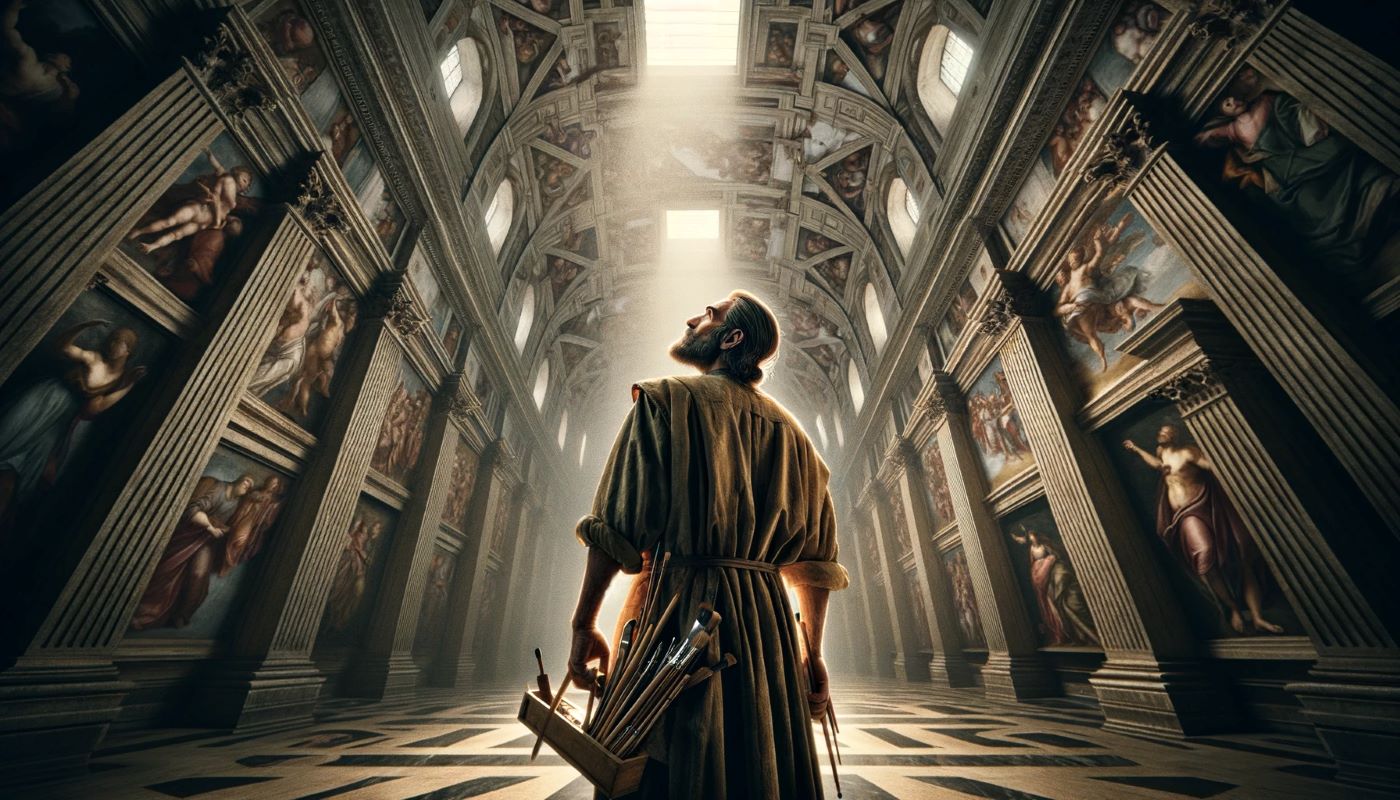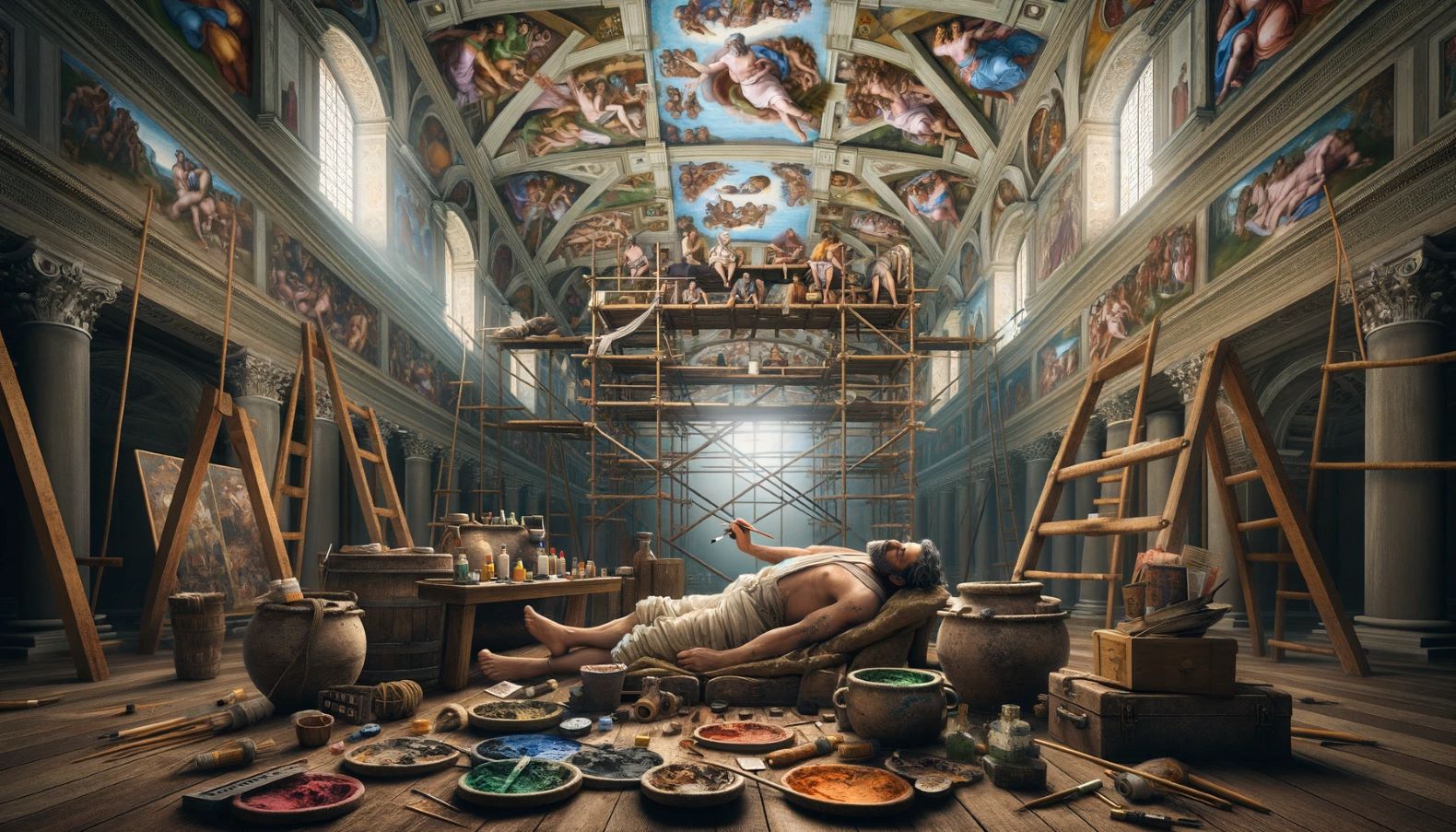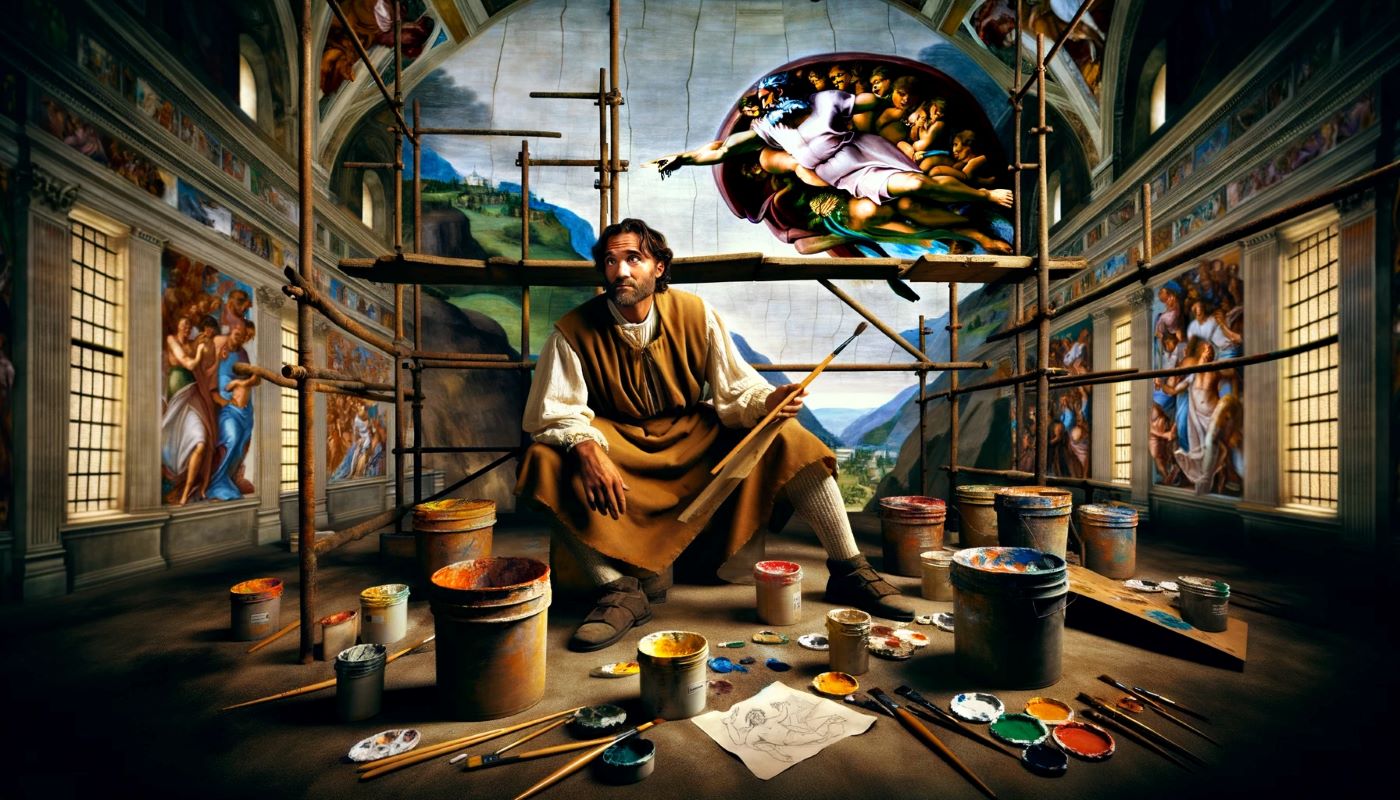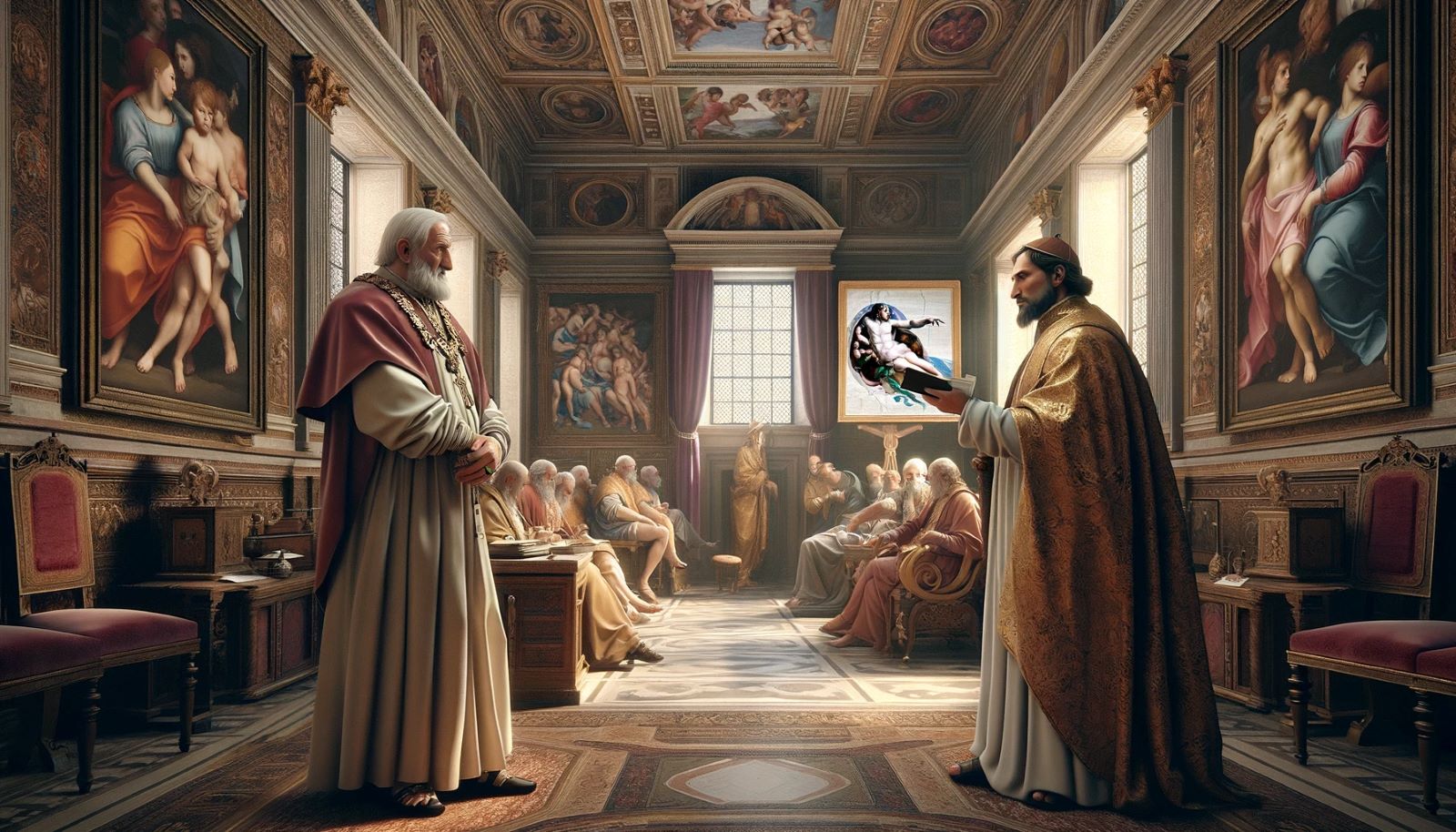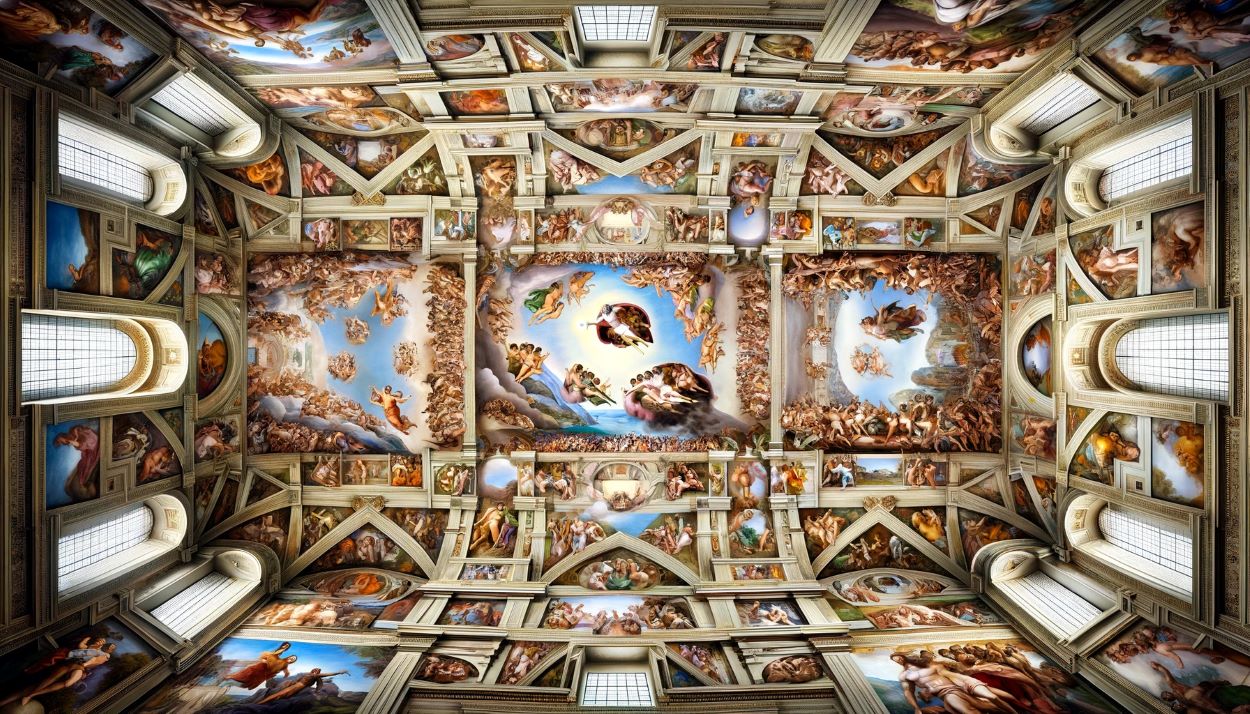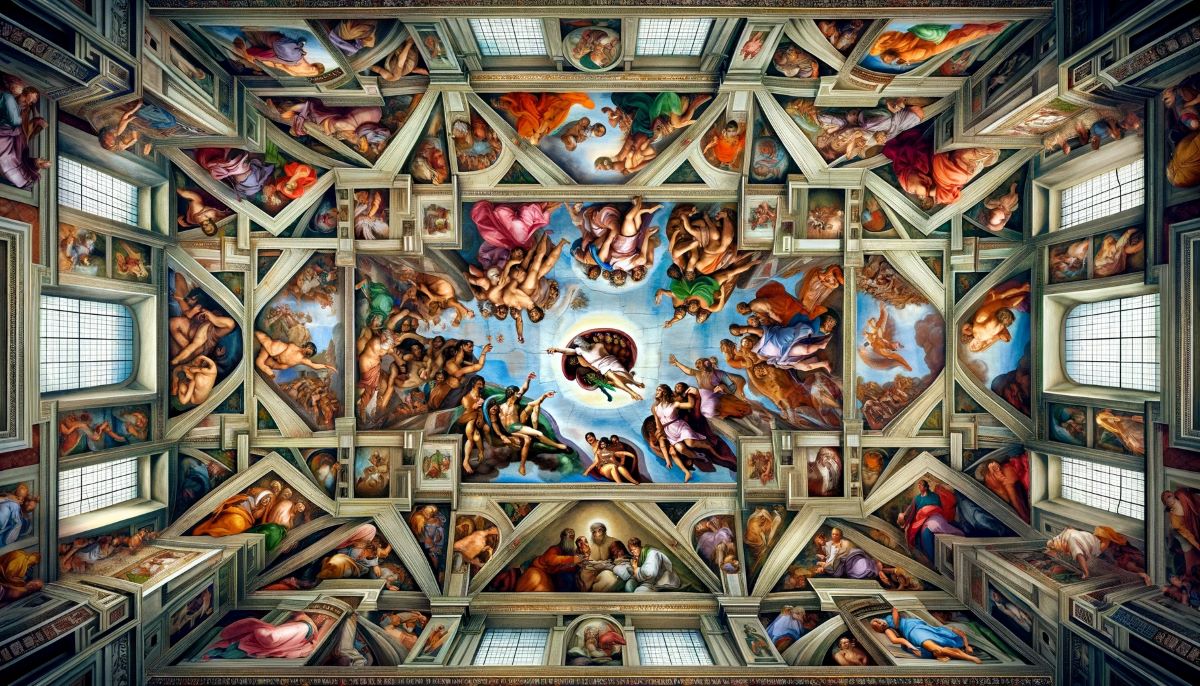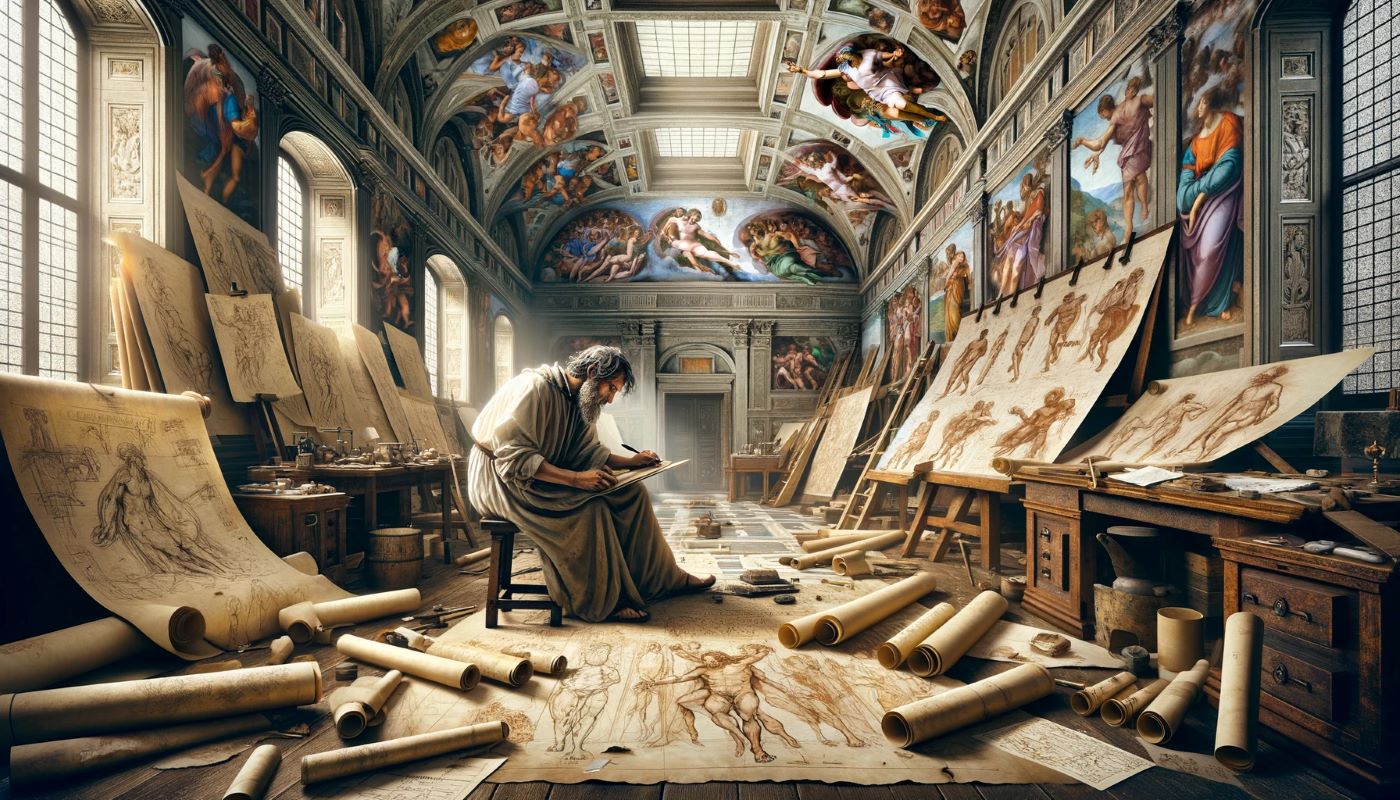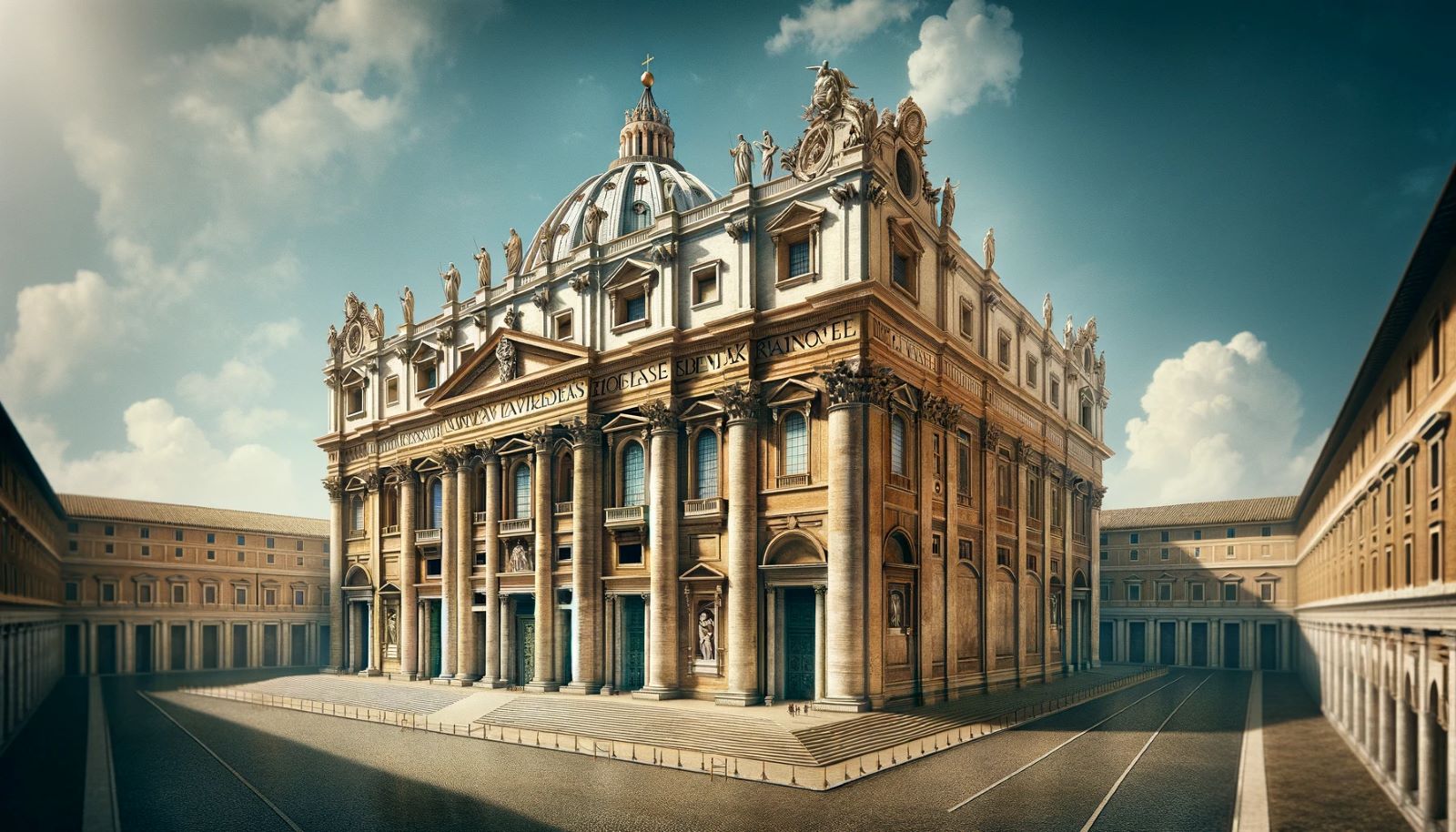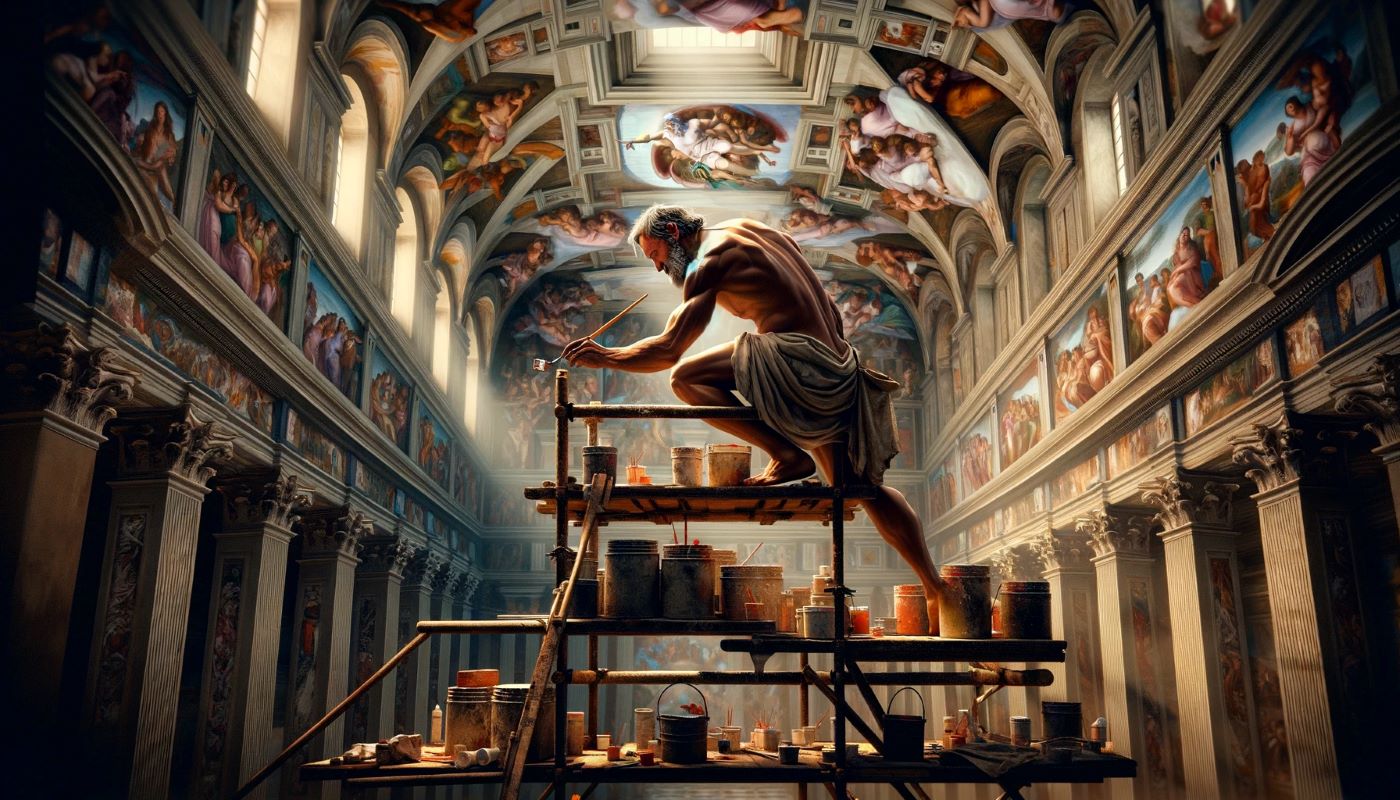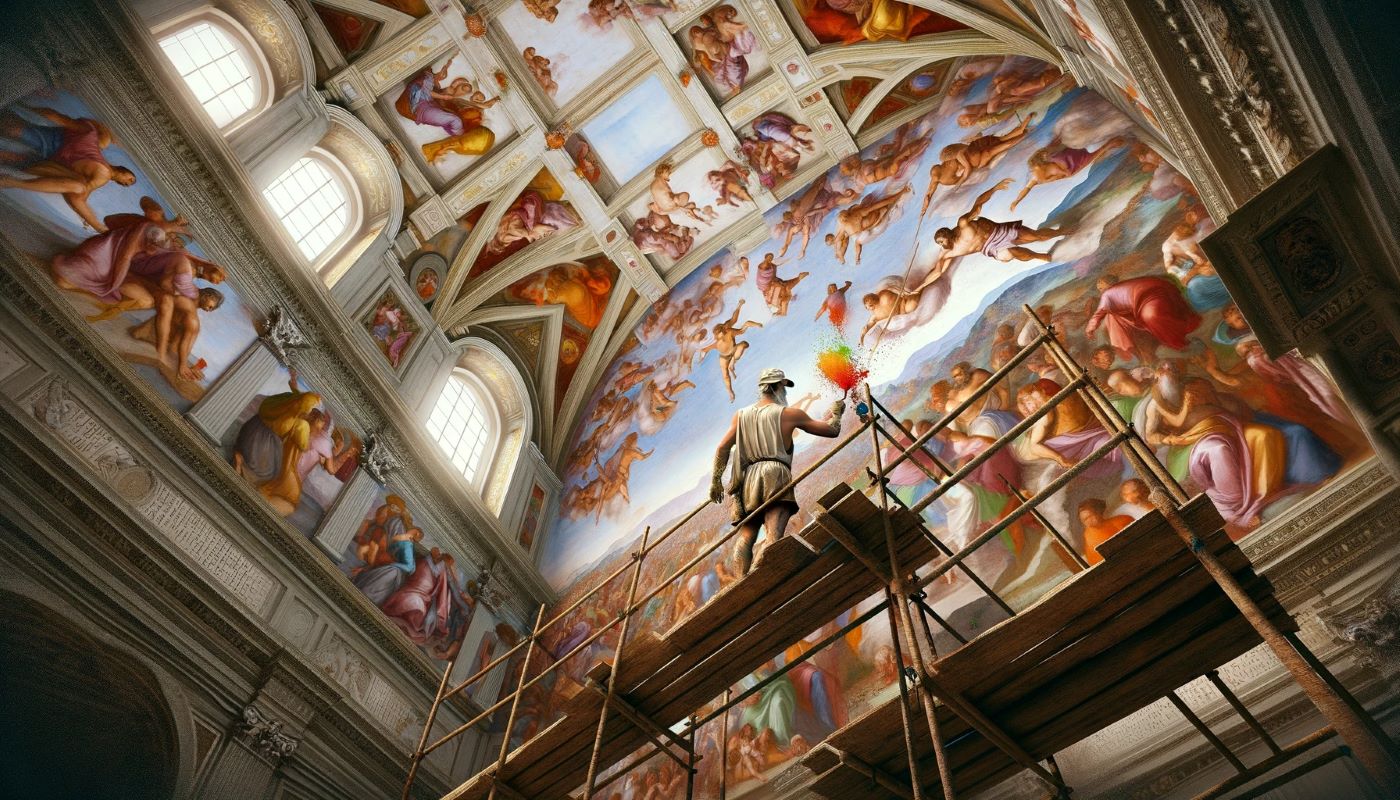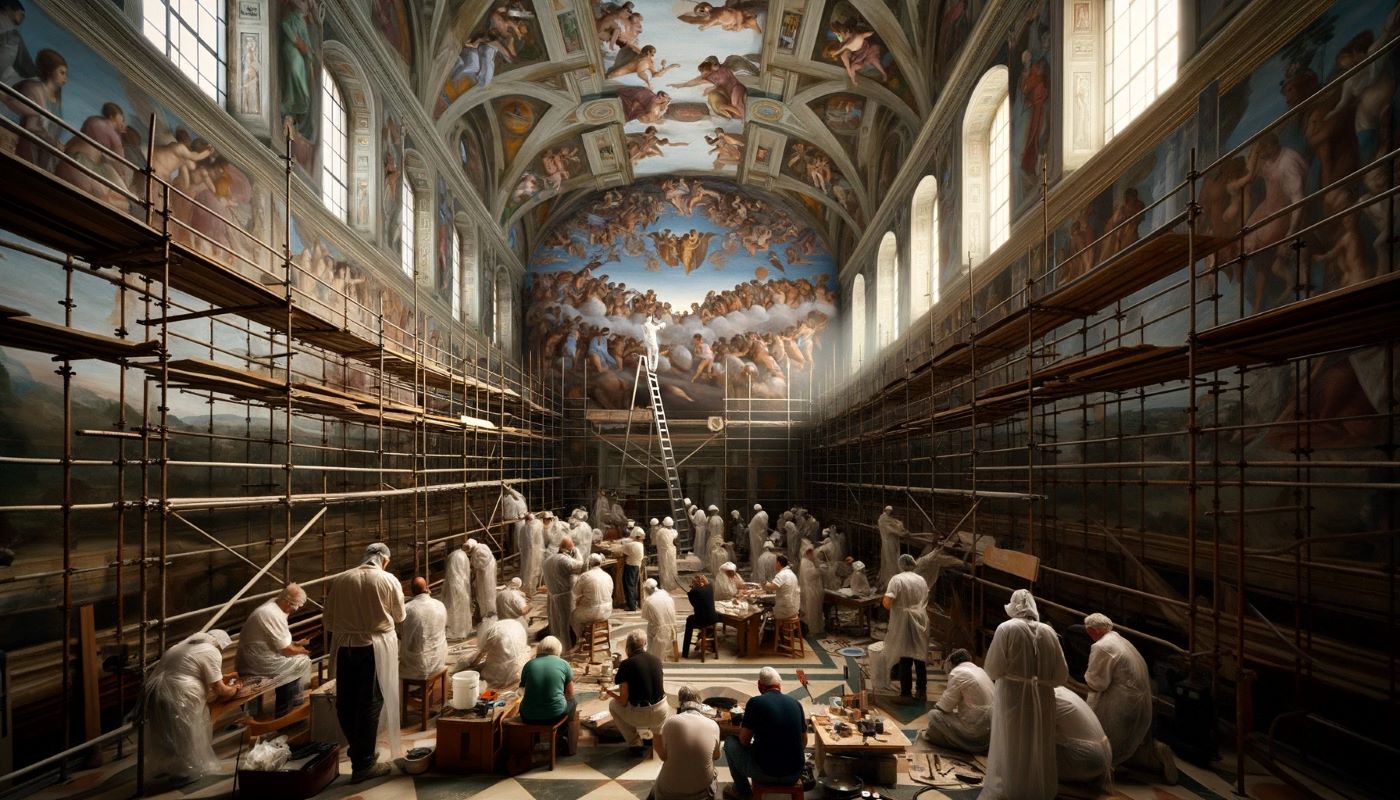Home>Arts and Culture>What Kind Of Paint Did Michelangelo Use On The Sistine Chapel


Arts and Culture
What Kind Of Paint Did Michelangelo Use On The Sistine Chapel
Published: March 4, 2024
Jason DeRose, Managing Editor at Christian.net, uses his expertise in religion and journalism to deepen understanding of faith's societal impacts. His editorial leadership, coupled with a strong academic background, enriches the platform’s diverse content, earning him recognition in both journalism and religious circles.
Discover the type of paint Michelangelo used on the Sistine Chapel ceiling and explore the artistic techniques of this iconic masterpiece. Uncover the secrets of arts and culture with our in-depth analysis.
(Many of the links in this article redirect to a specific reviewed product. Your purchase of these products through affiliate links helps to generate commission for Christian.net, at no extra cost. Learn more)
Table of Contents
Introduction
What kind of paint did Michelangelo use on the Sistine Chapel? This question has intrigued art enthusiasts and scholars for centuries. Michelangelo's masterpiece, the Sistine Chapel ceiling, is renowned for its breathtaking frescoes that depict scenes from the Book of Genesis. The techniques and materials used by Michelangelo in creating these iconic paintings have been the subject of much speculation and study. In this article, we will delve into the painting techniques employed by Michelangelo, the materials he used, the composition of his paint, and the preservation of his timeless artwork. Let's unravel the mysteries behind the creation of one of the most celebrated works of art in history.
Michelangelo's Painting Techniques
Michelangelo, a master of the Italian Renaissance, employed various painting techniques to create the awe-inspiring frescoes adorning the Sistine Chapel ceiling. One of the primary methods he utilized was fresco painting, a technique where pigments are applied onto freshly laid plaster. This allowed the colors to become an integral part of the wall or ceiling, resulting in vibrant and long-lasting artwork. Michelangelo's meticulous approach involved working swiftly and precisely on small sections of wet plaster, known as giornate, to ensure the colors adhered effectively. His ability to blend and layer pigments seamlessly contributed to the lifelike quality of the figures and scenes depicted in the Sistine Chapel.
In addition to fresco painting, Michelangelo also employed a technique called "buon fresco," which involves applying pigments onto wet plaster. This method required exceptional skill and speed, as the artist had a limited window of time to work before the plaster dried. Michelangelo's mastery of this technique is evident in the seamless transitions and intricate details present in his frescoes. By skillfully manipulating light and shadow, he created a sense of depth and three-dimensionality that continues to captivate viewers to this day.
Furthermore, Michelangelo's painting techniques extended beyond fresco to include the use of underpainting and glazing. Underpainting involved creating a monochromatic base layer to establish the composition and tonal values before applying the final colors. This technique allowed Michelangelo to refine the forms and contours of his subjects, adding depth and dimension to the overall composition. Subsequently, he utilized glazing to apply translucent layers of color, enhancing the richness and luminosity of the final paintings. The combination of these techniques contributed to the timeless beauty and visual impact of the Sistine Chapel ceiling, solidifying Michelangelo's legacy as a pioneering master of the arts.
The Materials Used in the Sistine Chapel
-
Pigments: Michelangelo utilized a range of pigments to bring his frescoes to life. These pigments were derived from natural sources such as minerals, plants, and even insects. Some of the pigments he used included ultramarine blue, made from lapis lazuli, a precious stone; vermilion, a vibrant red pigment derived from mercury sulfide; and lead white, which provided a brilliant white hue. These pigments, when mixed with water and applied to the wet plaster, created the stunning array of colors that adorn the Sistine Chapel ceiling.
-
Plaster: The foundation of Michelangelo's frescoes was the plaster on which he applied his pigments. The plaster, composed of lime, sand, and water, served as the canvas for his artistic endeavors. The application of the pigments onto the wet plaster allowed the colors to seep into the surface, becoming an integral part of the chapel's architecture. This technique ensured the longevity and durability of the artwork, as the colors remained vibrant and resistant to fading over the centuries.
-
Brushes and Tools: In executing his masterful frescoes, Michelangelo relied on an assortment of brushes and tools to manipulate the pigments and plaster. His brushes varied in size and shape, allowing him to achieve intricate details and broad strokes with precision. Additionally, he utilized tools such as spatulas and trowels to apply and manipulate the plaster, ensuring a smooth and even surface for his paintings. Michelangelo's adept use of these materials and tools contributed to the seamless integration of his artwork into the fabric of the Sistine Chapel.
-
Binding Agents: To bind the pigments and ensure their adhesion to the plaster, Michelangelo employed binding agents such as egg whites or animal glue. These substances acted as a cohesive medium, allowing the pigments to adhere to the surface and form a lasting bond with the plaster. The meticulous combination of pigments and binding agents enabled Michelangelo to achieve the rich and enduring colors that continue to mesmerize visitors to the Sistine Chapel.
-
Gold Leaf: In addition to pigments, Michelangelo incorporated gold leaf into some of his frescoes, adding a touch of opulence and grandeur to the artwork. The shimmering gold leaf, meticulously applied to specific elements of the paintings, contributed to the celestial ambiance of the scenes depicted on the chapel ceiling. The use of gold leaf exemplified Michelangelo's attention to detail and his commitment to elevating the visual impact of his masterwork.
By skillfully employing these materials, Michelangelo transformed the Sistine Chapel into a transcendent space adorned with timeless masterpieces, leaving an indelible mark on the world of art and inspiring generations of admirers.
The Composition of Michelangelo's Paint
Michelangelo's paint composition was a crucial element in the creation of his iconic frescoes in the Sistine Chapel. The pigments used by Michelangelo were meticulously crafted from natural sources, resulting in a rich and diverse color palette that brought his masterpieces to life. The composition of his paint included a meticulous selection of pigments, binding agents, and additives, each playing a vital role in the vibrancy and longevity of his artwork.
Pigments
The pigments employed by Michelangelo were derived from a variety of natural sources, each contributing unique hues and properties to his paint. Ultramarine blue, extracted from the semi-precious stone lapis lazuli, provided a deep and lustrous blue tone, symbolizing the celestial expanses depicted in the frescoes. Vermilion, a vivid red pigment derived from mercury sulfide, added warmth and intensity to the compositions, while lead white imparted brilliance and luminosity to the highlights and details. These carefully chosen pigments, when combined with skill and precision, resulted in a harmonious and visually captivating color scheme.
Binding Agents
To bind the pigments and ensure their adhesion to the plaster, Michelangelo utilized binding agents such as egg whites or animal glue. These binding agents acted as a cohesive medium, allowing the pigments to form a durable bond with the plaster and contribute to the longevity of the frescoes. The meticulous combination of pigments and binding agents enabled Michelangelo to achieve the rich and enduring colors that continue to mesmerize visitors to the Sistine Chapel.
Additives
In addition to pigments and binding agents, Michelangelo incorporated additives to modify the properties of his paint and enhance its workability. Substances such as linseed oil or resin could be added to the paint mixture to alter its drying time, viscosity, or translucency, providing the artist with greater control over the application and manipulation of the pigments. These additives allowed Michelangelo to achieve subtle gradations of color and texture, contributing to the depth and realism of his frescoes.
By carefully considering the composition of his paint and the interaction of its components, Michelangelo was able to create a cohesive and enduring body of work that continues to inspire and captivate audiences across the globe. His meticulous approach to paint composition, combined with his unparalleled skill and artistic vision, solidified his legacy as one of the greatest artists in history.
The Preservation of Michelangelo's Artwork
Preserving Michelangelo's timeless artwork in the Sistine Chapel has been a paramount endeavor, ensuring that future generations can continue to marvel at the master's genius. The conservation and restoration efforts dedicated to maintaining the integrity of the frescoes have been a testament to the enduring significance of Michelangelo's contributions to art history.
Restoration Techniques
Over the centuries, the frescoes in the Sistine Chapel endured the effects of aging, environmental factors, and the passage of time. In response to these challenges, meticulous restoration efforts have been undertaken to safeguard the integrity of Michelangelo's masterpieces. Skilled conservators have employed innovative techniques to address issues such as surface grime, discoloration, and structural instability, ensuring that the frescoes regain their original splendor. Advanced cleaning methods, including the use of solvents and poultices, have been employed to delicately remove accumulated layers of dirt and pollutants, unveiling the true vibrancy of the colors beneath. Additionally, consolidation and stabilization procedures have been implemented to address areas of detachment or deterioration, safeguarding the structural stability of the frescoes for generations to come.
Read more: When Did Michelangelo Paint Sistine Chapel
Environmental Control
The preservation of Michelangelo's artwork also necessitates the implementation of stringent environmental controls within the Sistine Chapel. Measures such as climate regulation, air filtration, and lighting management have been crucial in mitigating the impact of environmental factors on the frescoes. By maintaining stable temperature and humidity levels, conservators have minimized the risk of moisture-related damage and the proliferation of microorganisms that could compromise the integrity of the artwork. Furthermore, the implementation of specialized lighting systems has reduced the exposure of the frescoes to potentially harmful ultraviolet radiation, safeguarding the pigments and substrates from accelerated deterioration.
Protective Measures
In addition to restoration and environmental control, protective measures have been implemented to minimize the impact of human interaction on the frescoes. The implementation of visitor guidelines, including restrictions on photography, physical contact, and excessive noise, has been instrumental in preserving the delicate surfaces of the artwork. Furthermore, the installation of barriers and monitoring systems has helped to regulate visitor traffic and prevent inadvertent damage to the frescoes, ensuring that they remain accessible for future generations to admire and appreciate.
Ongoing Research and Monitoring
The preservation of Michelangelo's artwork is an ongoing endeavor, supported by continuous research, monitoring, and technological advancements. Collaborative efforts between art historians, conservation scientists, and experts in various fields have facilitated the development of innovative conservation strategies and the refinement of existing preservation techniques. State-of-the-art monitoring systems, including non-invasive imaging technologies and microclimate sensors, have provided valuable insights into the condition of the frescoes, enabling conservators to proactively address potential risks and implement targeted interventions to safeguard the artwork.
Legacy of Preservation
The dedication to preserving Michelangelo's artwork in the Sistine Chapel serves as a testament to the enduring legacy of the artist and the profound impact of his contributions to the world of art. By employing a multidisciplinary approach that integrates art historical research, scientific analysis, and conservation ethics, the custodians of the Sistine Chapel have upheld their commitment to safeguarding these irreplaceable treasures for future generations. The ongoing preservation efforts not only honor Michelangelo's artistic legacy but also ensure that the transcendent beauty of the Sistine Chapel remains a source of inspiration and wonder for centuries to come.
